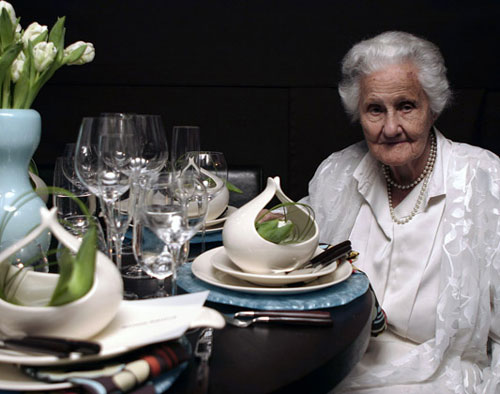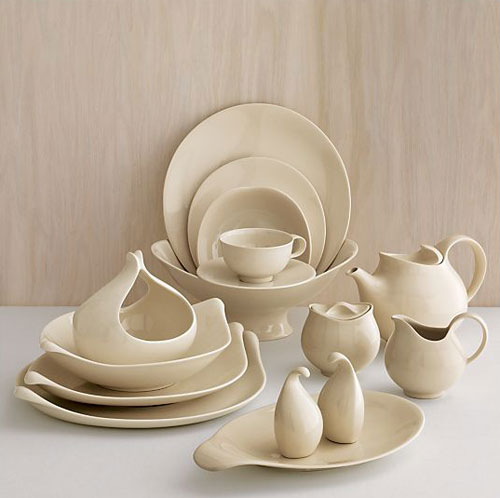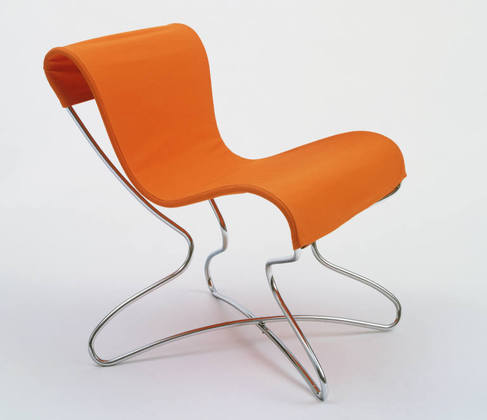The Styleture editorial team has many heroes in the design world; perhaps none have been more of an influence on us than the late Eva Zeisel. Ms. Zeisel, a Hungarian-born industrial designer known for her work with ceramics, passed away on December 30th at the age of 105. As admirers and fans that are simply in awe of what she contributed to the design world, we’d like to take this opportunity to remember her.
Zeisel was born in Budapest in 1906 to a highly educated and intellectual Jewish family; her mom was the first woman to receive a PhD from the University of Budapest, one of her brothers was a sociologist and economist and the other a chemist and philosopher of science. Zeisel on the other hand, was more drawn towards artistic pursuits. She learned ceramics through a local guild and worked for several German manufacturers. In the late 20’s, she became a designer at Schramberger Majolikafabrik and began creating unique and geometric designs for tea sets, vases, inkwells and other ceramic pieces. Her designs were influenced by the architecture of the times. Her life was actually quite glamorous; she spent time at cafes and parties among big city intellectuals and artists. She eventually moved to Russia to work in the country’s ceramics industry, but in 1936 she was falsely accused and arrested for participating in plot to kill Joseph Stalin. She spent 16 months in prison – how’s that for suffering for your art? When she was released from prison and deported to Austria, she met up with her future husband. Shortly thereafter, they had to leave for the U.S. when the Nazis invaded the country.
In the U.S., she found a plethora of creative outlets and worked for a variety of companies including Castleton China, Western Stoneware and Red Wing Pottery. She developed and taught ceramics coursework for the Pratt Institute in New York and was given the first one-woman show at the Museum of Modern Art in New York. Zeisel developed some of her most eccentric designs for dinnerware in the 1940s and ’50s and played a large part in the way Americans set their tables. Zeisel’s designs were made for daily use, not show. Her forms were sensuous and often inspired by the curves of the human body. She had an organic approach to modernism – no doubt a reaction to Bauhaus aesthetics from her early period as an artist. Her color choices and her sense of form were influenced by Hungarian folk art and she enjoyed designing pieces so they fit into larger family groups.
Zeisel had some interesting views on design; she once told a reporter that “men have no concept of how to design things for the home” and that “women should design the things they use.” Zeisel’s work, which ultimately spanned nine decades, has allowed her to own a rich legacy. Some of her most memorable works include rug designs for The Rug Company, a teakettle for Chantal, and ceramics for KleinReid. She also designed Crate and Barrel’s best selling dinner set, “Classic-Century”. In her very late career in 2010, she released Eva Zeisel Lounge Chair and Eva Zeisel Salt & Pepper Shakers; both were featured in O Magazine in the same year. As for awards, Zeisel won the Lifetime Achievement award from the Cooper-Hewett National Design Museum and she has also received the two highest civilian awards from the Hungarian government. To experience her work, all you have to do is head to any one of her permanent collections at the Metropolitan Museum, Brooklyn Museum, New-York Historical Society or The Museum of Modern Art, New York. Other museums throughout the U.S. and abroad also feature her work.
It’s a proud day for Styleture that we get to remember and honor the talented Eva Zeisel. Though we will miss her, it brings us comfort to know that her spirit lives on through her magnificent works.






